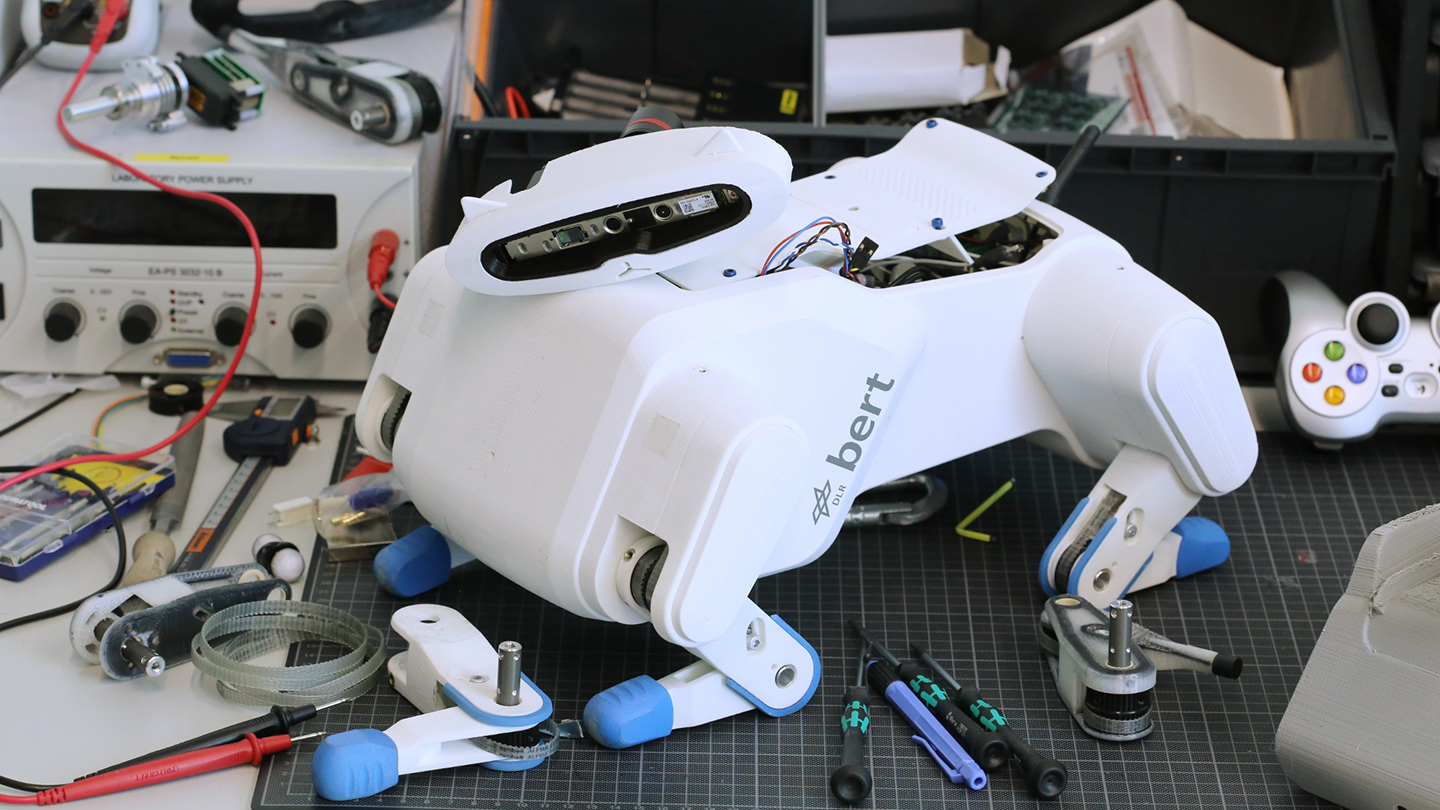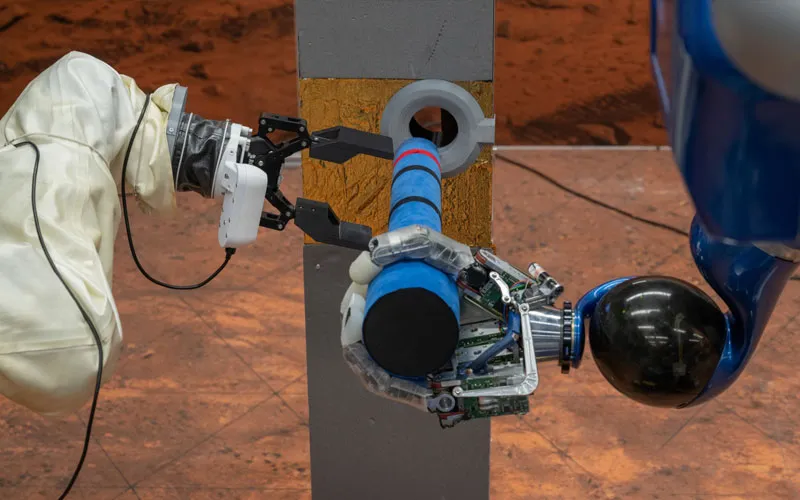A DLR four-legged robot for future missions on Moon and Mars successfully tested
29th Jan 2024
ESA project astronaut Marcus Wandt achieved successful test results in the DLR’s Surface Avatar project. He demonstrated his ability to remotely control Bert, a four-legged robot supposed to advance future Moon and Mars explorations.
Astronaut aboard Space Station controls robot on Earth
Wandt conducted a series of experiments lasting two hours to assess the impact of time delays on robot control in space missions.
In the Columbus module of the International Space Station, he remotely operated robots in DLR’s (Institute of Robotics and Mechatronics) Oberpfaffenhofen facilities’ Mars Laboratory. The experiments involved Wandt taking control of three distinct robots. The first of them was Bert.
Bert – the first four-legged robot controlled from space
Bert was introduced in 2017. It is a quadrupedal robotic platform designed for the study of biological locomotion – the way how living organisms move. The initial version of the robot weighed approximately three kilograms. But scientists have developed various versions since its unveiling.

Exploring dangerous inaccessible targets
The distinctive form of robotic locomotion exhibited by Bert proves advantageous for navigating challenging terrains. It enables robots like Bert to investigate locations deemed too perilous or inaccessible for human exploration, such as confined spaces like small caves.
Following his control of Bert, Wandt permitted the robot to explore autonomously. He shifted his focus to oversee DLR’s wheeled humanoid service robot, Rollin’ Justin, and ESA’s Interact Rover.
During the control of Rollin’ Justin and the Interact Rover, Wandt successfully directed the humanoid robot to maintain a pipe in a specific position while the rover proceeded to install it. This process served as a validation of cooperative systems, a pivotal component of the Surface Avatar project.
The Surface Avatar project’s aim
The Surface Avatar project is a collaborative effort between the German space agency DLR and the European Space Agency (ESA), initiated in 2020. The project’s primary objective is to advance technology, enabling astronauts to exert precise control over multiple robots simultaneously or enable the robots to operate semi or fully autonomously.
The overarching vision is to deploy these advanced systems during future human explorations on the Moon and Mars. This should enhance expedition capabilities and facilitate scientific endeavors in extraterrestrial environments.
Alin Albu-Schäffer, director of the DLR Institute of Robotics and Mechatronics, stated that “Future stations on the Moon and Mars, including astronaut habitats, will be built and maintained by robots operating under the guidance of astronauts”.
![Beauty of the Pink Moon And Lyrid Meteor Shower in This Week’s Best Astrophotos [19-26 April] Beauty of the Pink Moon And Lyrid Meteor Shower in This Week’s Best Astrophotos [19-26 April]](https://orbitaltoday.com/wp-content/uploads/2024/04/Pink-Moon-is-on-its-way-above-the-mountains-1-300x300.jpg)





Thank you for your comment! It will be visible on the site after moderation.